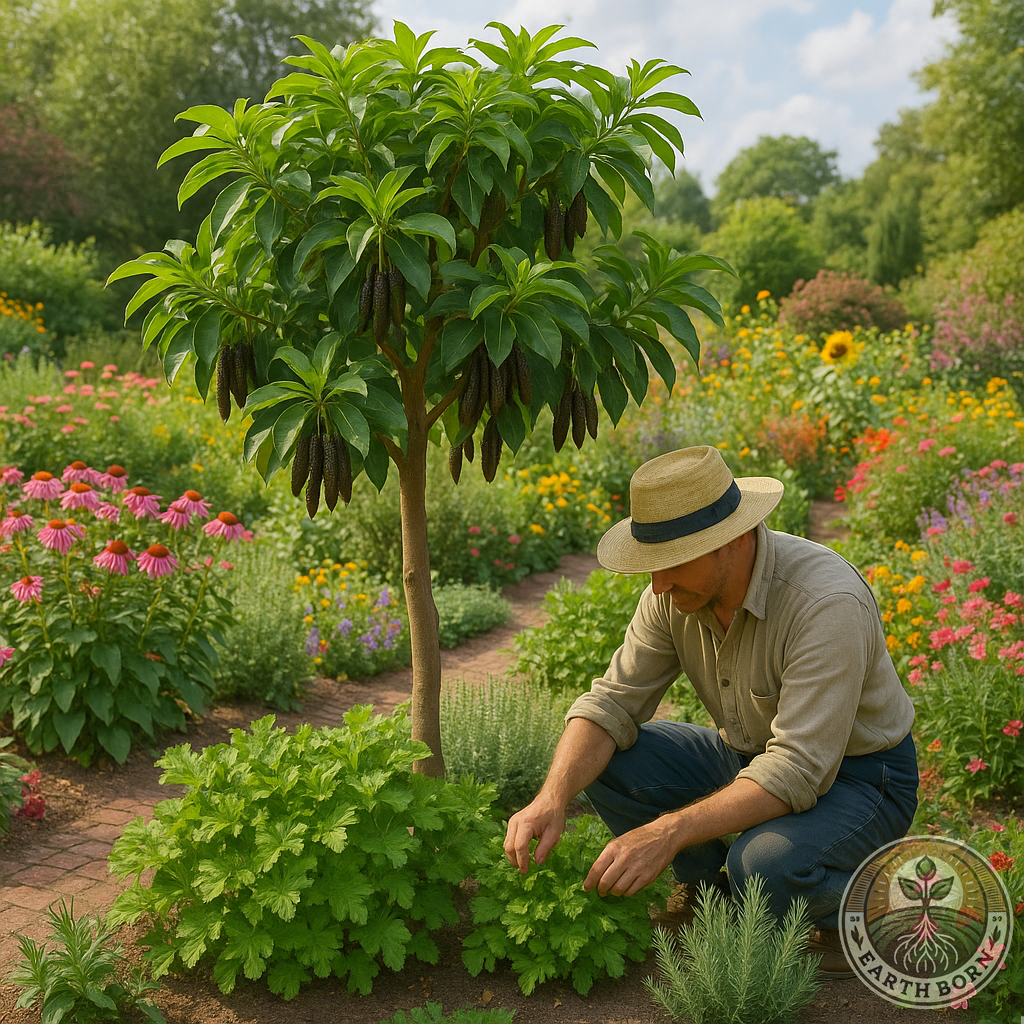
🌱 Intro
🌱 Introduction and history
Xylopia aethiopica, commonly known as African Pepper or African Guinea Pepper, is a perennial evergreen tree native to West and Central Africa. Traditionally used in culinary and spiritual practices, its dried fruit pods have a spicy, peppery flavor akin to black pepper and are widely used in African cuisines. Historically, African Pepper was also traded across the Mediterranean and Arab world for its aromatic and medicinal properties.
💊 Medicinal Benefits
African Pepper is revered in traditional medicine for its potent anti-inflammatory, antioxidant, antimicrobial, and analgesic effects. It is used to:
- Relieve gastrointestinal discomfort such as bloating and indigestion.
- Alleviate respiratory issues like coughs and bronchitis.
- Assist in postpartum recovery.
- Soothe rheumatic pain and muscle tension.
Note: May cause skin irritation or sensitivity in some individuals.
📅 When to Plant in South Africa
The best time to plant African Pepper in South Africa is from late September to early November (spring). Use well-established seedlings or start seeds indoors 6–8 weeks before transplanting.
🏡 Where to Plant
Ideal for subtropical and tropical climates, plant African Pepper in the ground in a sunny, sheltered spot. It’s best suited to warm areas like Limpopo, KwaZulu-Natal, and Mpumalanga.
🌞 Soil, Water & Sunlight Requirements
✅ Soil: Rich, loamy, and well-draining with good organic content.
✅ Sunlight: Full sun to partial shade.
✅ Water: Water moderately and consistently. Avoid waterlogging.
✅ Fertilize: Apply compost or a balanced organic fertilizer every 4–6 weeks during the growing season.
✅ Spacing: Trees should be spaced 3–4 meters apart.
✅ Seeds germinate: In 2–4 weeks with warmth and moisture.
✅ Transplanting: Transplant when seedlings are 15–20 cm tall and after the last frost.
✅ Maturity height: Grows 10–20 meters tall under ideal conditions.
🍓 Flowers & Fruit
It produces small, greenish-yellow flowers that give way to slender, dark brown pods (3–5 cm long). These aromatic pods are harvested and dried for use as a spice or medicine.
🌼 Companion Plants
African Pepper benefits from growing near nitrogen-fixing plants such as pigeon pea or cowpea, which enrich the soil. Avoid crowding with large-rooted trees.
🐛 Common Pests
Watch for aphids, spider mites, and scale insects. Use neem oil or insecticidal soap as a natural treatment.
🧺 Harvesting
Harvest pods once they turn dark brown and begin to dry on the tree—usually 2–3 years after planting. Use pruning shears to avoid damaging branches.
🫙 Storage
Dry the pods completely and store them in airtight glass jars in a cool, dark place. Properly stored, they can retain flavor and potency for up to 12 months.
🧪 How to Use as Medicine
African Pepper is commonly used in traditional remedies:
- Infusion: Simmer a few crushed pods in hot water to relieve coughs or menstrual cramps.
- Poultice: Ground pods mixed with shea butter for topical pain relief.
- Decoction: Used in steam baths for colds and sinus issues.
🎉 Fun Fact
African Pepper is also called “Negro Pepper” or “Grains of Selim” and is one of the few indigenous spices to gain popularity across both traditional medicine and modern culinary circles in West Africa.
⚠️ Caution
Not recommended for pregnant women due to its uterine-stimulating effects. Always consult a qualified herbalist or healthcare provider before use.
🌿 Add a spicy spark to your Earthborn garden with African Pepper!
This multipurpose plant is perfect for those who love flavor, fragrance, and function. Start planting today and discover the power of ancient African spice medicine in your own backyard.


 **Meet Sprout!** Sprout is your friendly gardening companion at Earthborn, always ready with helpful advice on plant care, medicinal herbs, and natural gardening solutions. From seedling to harvest, Sprout provides expert guidance to nurture your garden and your well-being—making gardening easy, fun, and naturally rewarding.
**Meet Sprout!** Sprout is your friendly gardening companion at Earthborn, always ready with helpful advice on plant care, medicinal herbs, and natural gardening solutions. From seedling to harvest, Sprout provides expert guidance to nurture your garden and your well-being—making gardening easy, fun, and naturally rewarding.

[…] To learn how to grow and care for your African Pepper Tree check out our Growers Guide […]